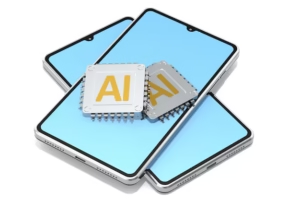Linear Temporal Logic (LTL) is a modal temporal logic that allows for the expression of properties of paths in a system. It is particularly useful for reasoning about the temporal aspects of system behavior. LTLF extends LTL by focusing on finite traces, making it suitable for systems that do not necessarily run indefinitely. This distinction is crucial for applications where systems have a defined start and end, such as embedded systems or specific software applications.
The Basics of Temporal Logic
Temporal logic is a formalism that enables reasoning about propositions qualified in terms of time. In LTL, the basic operators include:
- X (neXt): Indicates that a property holds in the next state.
- F (Future): Indicates that a property will eventually hold at some point in the future.
- G (Globally): Indicates that a property holds in all future states.
- U (Until): Indicates that one property holds until another property becomes true.
These operators allow for the expression of complex temporal properties, making LTL a powerful tool for system verification.

LTLF: A Focus on Finite Traces
LTLF is specifically designed to handle finite traces, which are sequences of states that represent the execution of a system from start to finish. This focus on finite behavior is particularly relevant for systems that do not operate indefinitely, such as:
- Embedded Systems: Devices with a specific function within a larger system, often with limited resources.
- Software Applications: Programs that have a defined lifecycle, including startup, execution, and termination.
By using LTLF, engineers can specify and verify properties of these systems more effectively, ensuring that they behave correctly within their finite operational context.
Applications of LTLF Tech
LTLF tech has a wide range of applications across various domains. Some notable areas include:
1. Software Verification
In software engineering, LTLF is used to verify that programs meet their specifications. By expressing properties such as safety (something bad never happens) and liveness (something good eventually happens), developers can ensure that their software behaves as intended.
2. Hardware Design
In hardware design, LTLF can be applied to verify the correctness of circuits and systems. By modeling the behavior of hardware components and using LTLF to specify their expected behavior, engineers can identify potential issues before physical implementation.
3. Model Checking
Model checking is a formal verification technique that systematically explores the states of a system to verify that it satisfies certain properties. LTLF is often used in model checking to specify the properties being verified, allowing for automated analysis of system behavior.
Advantages of LTLF Tech
The use of LTLF tech offers several advantages:
- Expressiveness: LTLF allows for the specification of complex temporal properties, making it suitable for a wide range of applications.
- Automation: Tools that support LTLF can automate the verification process, reducing the time and effort required for manual checks.
- Finite Context: By focusing on finite traces, LTLF is particularly relevant for systems with defined lifecycles, ensuring that verification is applicable to real-world scenarios.

Challenges and Limitations
Despite its advantages, LTLF tech also faces challenges:
- Complexity: The expressiveness of LTLF can lead to complex specifications that are difficult to analyze and verify.
- Tool Support: While there are tools available for LTLF verification, they may not be as mature or widely adopted as those for other formalisms.
Conclusion
LTLF tech represents a significant advancement in the field of formal verification, providing a robust framework for specifying and verifying the behavior of systems with finite traces. Its applications in software engineering, hardware design, and model checking highlight its versatility and importance in ensuring system correctness. As technology continues to evolve, the relevance of LTLF tech will likely grow, making it an essential tool for engineers and developers alike.
This article provides a foundational understanding of LTLF tech, its applications, advantages, and challenges. As the field of formal verification continues to develop, LTLF will play a crucial role in ensuring the reliability and correctness of complex systems. ### Further Exploration of LTLF Tech
To delve deeper into LTLF tech, it is essential to understand its theoretical foundations, practical implementations, and the ongoing research that seeks to enhance its capabilities.
Theoretical Foundations of LTLF
LTLF builds upon the principles of temporal logic, which is rooted in mathematical logic and computer science. The key theoretical aspects include:
-
Syntax and Semantics: LTLF has a well-defined syntax that allows for the construction of formulas using temporal operators. The semantics of LTLF provides a framework for interpreting these formulas in the context of finite traces, ensuring that the properties expressed are meaningful within the specified domain.
-
Modeling Finite Systems: The ability to model finite systems is a significant aspect of LTLF. This involves creating state transition systems that represent the behavior of a system over time. Each state corresponds to a specific configuration of the system, and transitions represent changes in state based on inputs or events.
Practical Implementations of LTLF
LTLF tech is implemented in various tools and frameworks that facilitate its use in real-world applications. Some notable implementations include:

1. Verification Tools
Several verification tools support LTLF, allowing engineers to specify properties and check them against system models. Examples include:
- NuSMV: A symbolic model checker that supports LTLF and allows for the verification of finite-state systems.
- SPIN: A model checker that can verify TL properties in concurrent systems, providing a robust environment for system verification.
2. Integration with Development Environments
LTLF can be integrated into software development environments, enabling developers to specify and verify properties as part of the development process. This integration helps catch errors early in the development lifecycle, reducing the cost of fixing issues later.
Ongoing Research in LTLF Tech
Research in TLF tech is continually evolving, focusing on enhancing its capabilities and addressing its limitations. Key areas of research include:
-
Improving Tool Support: Efforts are underway to develop more sophisticated tools that can handle complex LTL specifications and provide better automation for verification processes.
-
Combining LTF with Other Formalisms: Researchers are exploring ways to combine LTF with other formal methods, such as probabilistic model checking and game theory, to address more complex verification scenarios.
-
Applications in Emerging Technologies: As new technologies emerge, such as the Internet of Things (IoT) and autonomous systems, LTLF is being adapted to verify the behavior of these systems, ensuring they meet safety and reliability standards.
Case Studies of LLF Applications
To illustrate the practical impact of LLF tech, several case studies highlight its application in various domains:
1. Automotive Systems
In the automotive industry, LLF has been used to verify the behavior of embedded systems in vehicles. By specifying safety properties, engineers can ensure that critical systems, such as braking and steering, function correctly under various conditions.
2. Network Protocols
LLF has been applied to verify network protocols, ensuring that they meet performance and security requirements. By modeling the behavior of protocols and specifying properties such as data integrity and confidentiality, engineers can identify potential vulnerabilities before deployment.
3. Robotics
In robotics, LT is used to verify the behavior of robotic systems, ensuring they operate safely and efficiently in dynamic environments. By specifying properties related to task completion and obstacle avoidance, engineers can enhance the reliability of robotic applications.
Future Directions for LTLF Tech
The future of LTLF tech is promising, with several potential directions for growth and development:
-
Enhanced Automation: As tools become more sophisticated, the automation of LF verification processes will improve, making it easier for engineers to integrate formal verification into their workflows.
-
Broader Adoption: Increased awareness of the benefits of LF tech may lead to broader adoption across industries, particularly in sectors where safety and reliability are paramount.
-
Interdisciplinary Collaboration: Collaboration between researchers, practitioners, and industry stakeholders will drive innovation in LF tech, leading to new applications and improved methodologies.
Conclusion
LT tech stands at the forefront of formal verification, providing a powerful framework for specifying and verifying the behavior of finite systems. Its applications across various domains, coupled with ongoing research and development, highlight its significan in ensuring system correctness and reliability. As technology continues to advance, LTLF will play an increasingly vital role in the development of safe and efficient systems, making it an essential area of focus for engineers and researchers alike.
This comprehensive exploration of LF tech underscores its importance in the modern landscape of computer science and engineering, paving the way for future advancements and applications.


